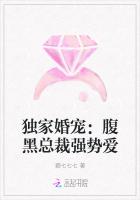In viviparous animals, as said before, the embryo gets its growth through the umbilical cord.For since the nutritive power of the soul, as well as the others, is present in animals, it straightway sends off this cord like a root to the uterus.The cord consists of blood-vessels in a sheath, more numerous in the larger animals as cattle and the like, one in the smallest, two in those of intermediate size.Through this cord the embryo receives its nourishment in the form of blood, for the uterus is the termination of many blood-vessels.All animals with no front teeth in the upper jaw, and all those which have them in both jaws and whose uterus has not one great blood-vessel running through it but many close together instead-all these have in the uterus the so-called cotyledons (with which the umbilical cord connects and is closely united; for the vessels which pass through the cord run backwards and forwards between embryo and uterus and split up into smaller vessels all over the uterus; where they terminate, there are found the cotyledons).Their convexity is turned towards the uterus, the concavity towards the embryo.Between uterus and embryo are the chorion and the membranes.As the embryo grows and approaches perfection the cotyledons become smaller and finally disappear when it is perfected.For Nature sends the sanguineous nutriment for the embryo into this part of the uterus as she sends milk into the breasts, and because the cotyledons are gradually aggregated from many into a few the body of the cotyledon becomes like an eruption or inflammation.So long as the embryo is comparatively small, being unable to receive much nutriment, they are plain and large, but when it has increased in size they fall in together.
But most of the animals which have front teeth in both jaws and no horns have no cotyledons in the uterus, but the umbilical cord runs to meet one blood-vessel, which is large and extends throughout the uterus.Of such animals some produce one young at a time, some more than one, but the same description applies to both these classes.
(This should be studied with the aid of the examples drawn in the Anatomy and the Enquiries.) For the young, if numerous, are attached each to its umbilical cord, and this to the blood-vessel of the mother; they are arranged next to one another along the stream of the blood-vessel as along a canal; and each embryo is enclosed in its membranes and chorion.
Those who say that children are nourished in the uterus by sucking some lump of flesh or other are mistaken.If so, the same would have been the case with other animals, but as it is we do not find this (and this can easily be observed by dissection).Secondly, all embryos alike, whether of creatures that fly or swim or walk, are surrounded by fine membranes separating them from the uterus and from the fluids which are formed in it; but neither in these themselves is there anything of the kind, nor is it possible for the embryo to take nourishment by means of any of them.Thirdly, it is plain that all creatures developed in eggs grow when separated from the uterus.
Natural intercourse takes place between animals of the same kind.
However, those also unite whose nature is near akin and whose form is not very different, if their size is much the same and if the periods of gestation are equal.In other animals such cases are rare, but they occur with dogs and foxes and wolves; the Indian dogs also spring from the union of a dog with some wild dog-like animal.















